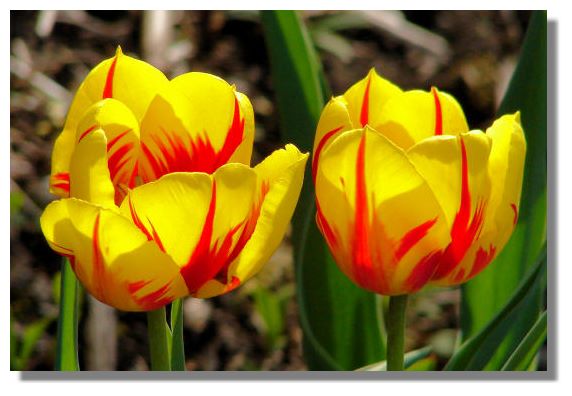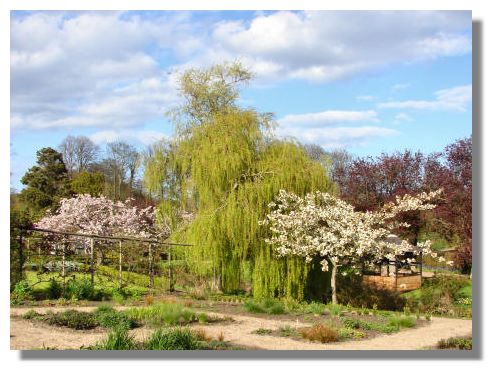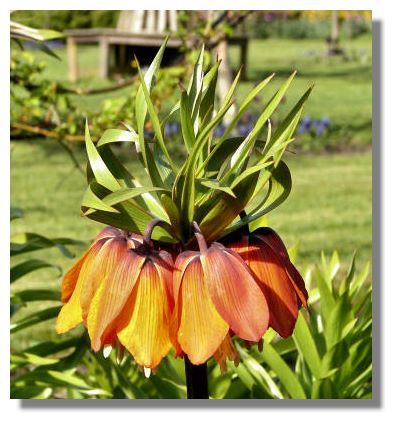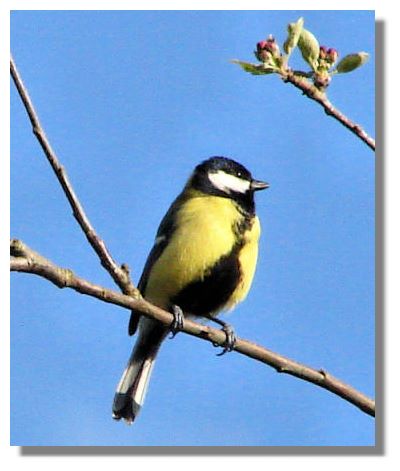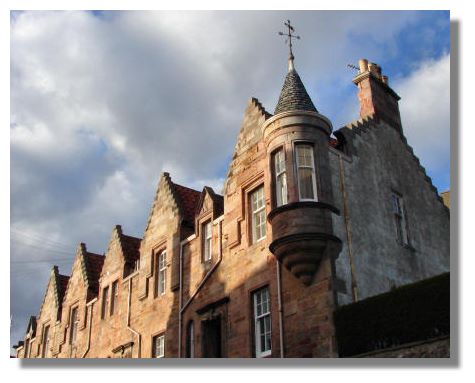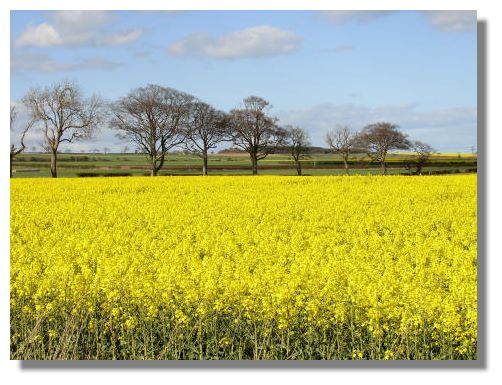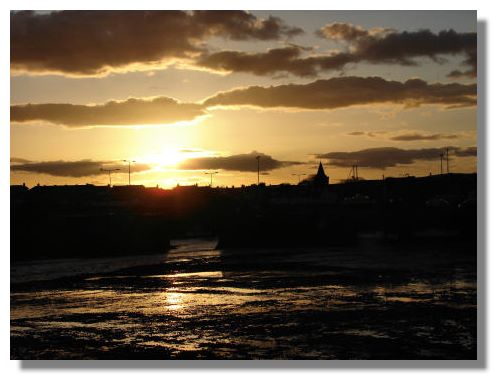Each week the Rampant Scotland Newsletter includes a number of photographs which illustrate the weather and the seasons, plus the flora and fauna of the current week around Scotland. There are often so many such graphics of Scottish subjects worth including that this separate "colour supplement" is created where some of the best pictures can be displayed in a larger format. Here is this week's crop of Scottish views - all photographed in the north-east corner of Fife known as the "East Neuk".
As the daffodils gradually fade, it's time for the tulips, with their "coats of many colours" to take their place. Tulips originated in Turkey and came to Western Europe 400 years ago. Since then, plant breeders have been creating ever-more colourful varieties. The ones pictured here were growing in the walled garden of Kellie Castle.
Cambo Estate, on the north coast of Fife, near Kingsbarns golf course, is a delightful spot, especially in the summer when all its many herbaceous border plants are in flower, creating a riot of colour. But it is equally charming in the late spring, with the cherry trees flanking the new, green leaves of the weeping willow.
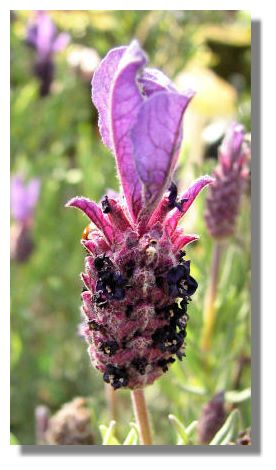
Lavandula stoechas (Spanish Lavender, Stoechas Lavender, or Topped Lavender) is a perennial shrub with flowers which are pinkish-purple (lavender-coloured), produced on spikes 2-3 cm long at the top of slender leafless stems. At the top of the spike are a number of much larger, bright sterile bracts, 10-50 mm long. This type of lavender has become quite popular in gardens in Scotland as it is slightly hardier than Common Lavender. Stoechas Lavender is used commercially in air fresheners and insecticides.
The bell-shaped flower of Fritallaria Imperalis is the largest of the fritallaries and the stems can grow as high as five feet, in the right conditions. This one was growing in the walled garden of Kellie Castle.
As its name implies, the Great Tit is the largest of the genus, reaching a size of a House Sparrow. Apart from a few northern European birds that fly south to the UK in winter, they do not migrate and can be seen in gardens and the countryside throughout the year. There has been a moderate increase in their numbers in the last 40 years.
The houses in this picture taken in Crail illustrate well the "crow-stepped" gables which have been used in Scotland from as early as the 16th century. The top of the parapet wall projects above the roofline and the top of the brick or stone wall is stacked in a step pattern above the roof as a decoration and as a convenient way to finish the brick courses. They are also convenient ledges for crows!
In recent years there has been an explosion in Scotland in the number of fields of Rapeseed (Brassica napus), also known as Oilseed Rape. It is very widely cultivated throughout the world for the production of animal feed, vegetable oil for human consumption and there has been a growing use in the production of biodiesel. The bright yellow flowers have transformed many landscapes as more and more farmers jump on the band-wagon with newer varieties that grow well here and which produce a good crop.
Regular readers of this Colour supplement will know that I am fond of sunset pictures - here's another one, taken looking over the harbour at the rooftops of the fishing port of Anstruther in Fife.
If you want to look back at earlier editions of this Colour Supplement, there is an Index Page
